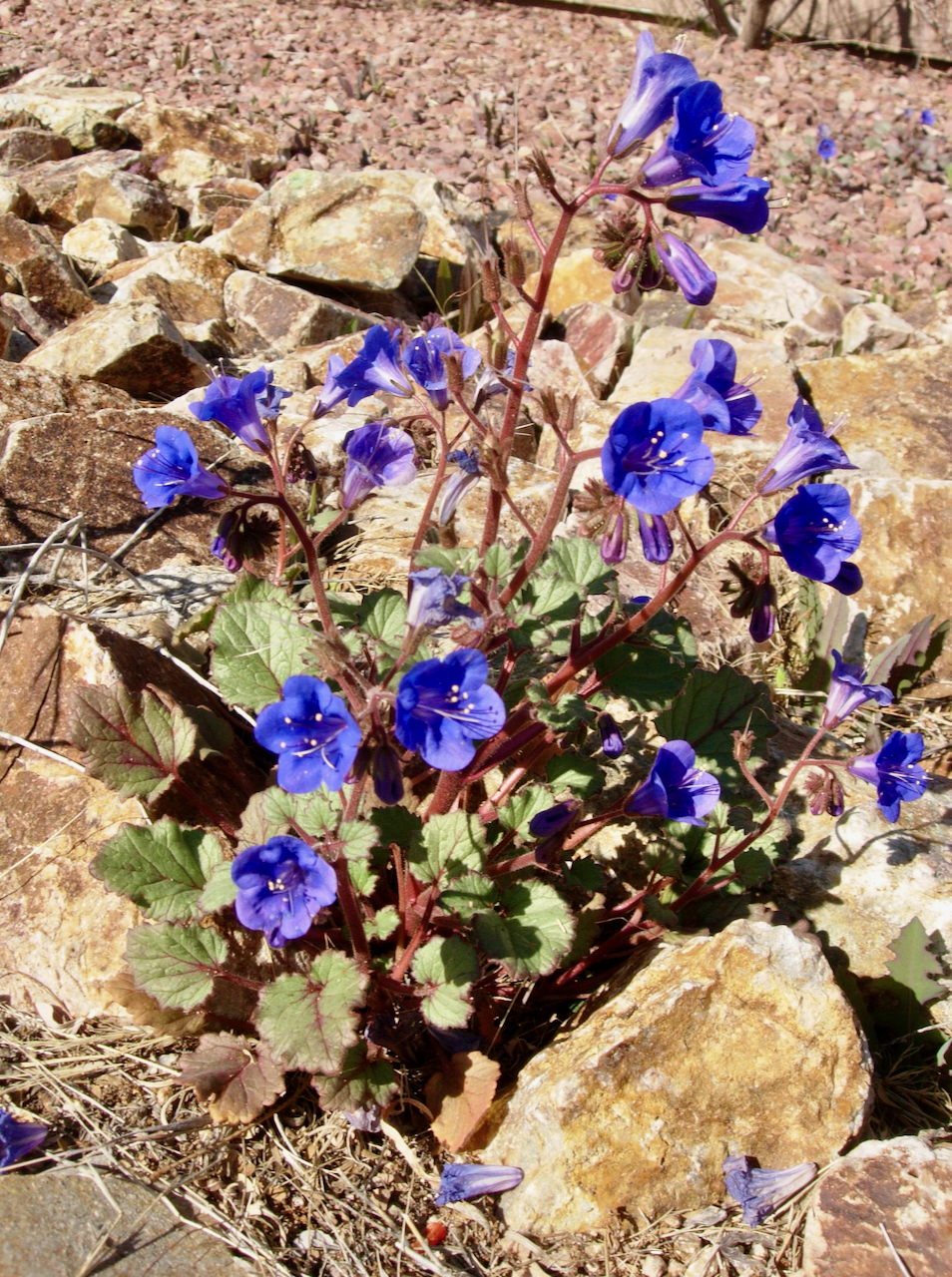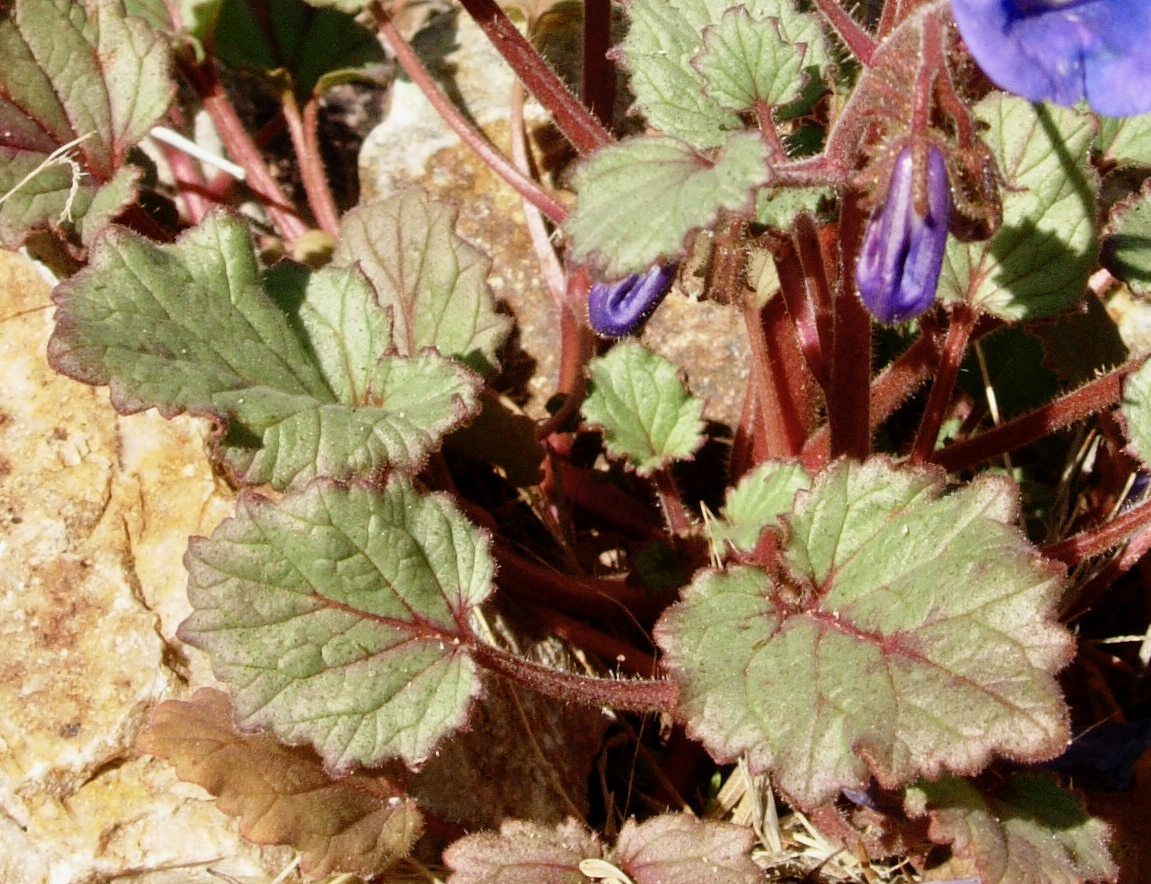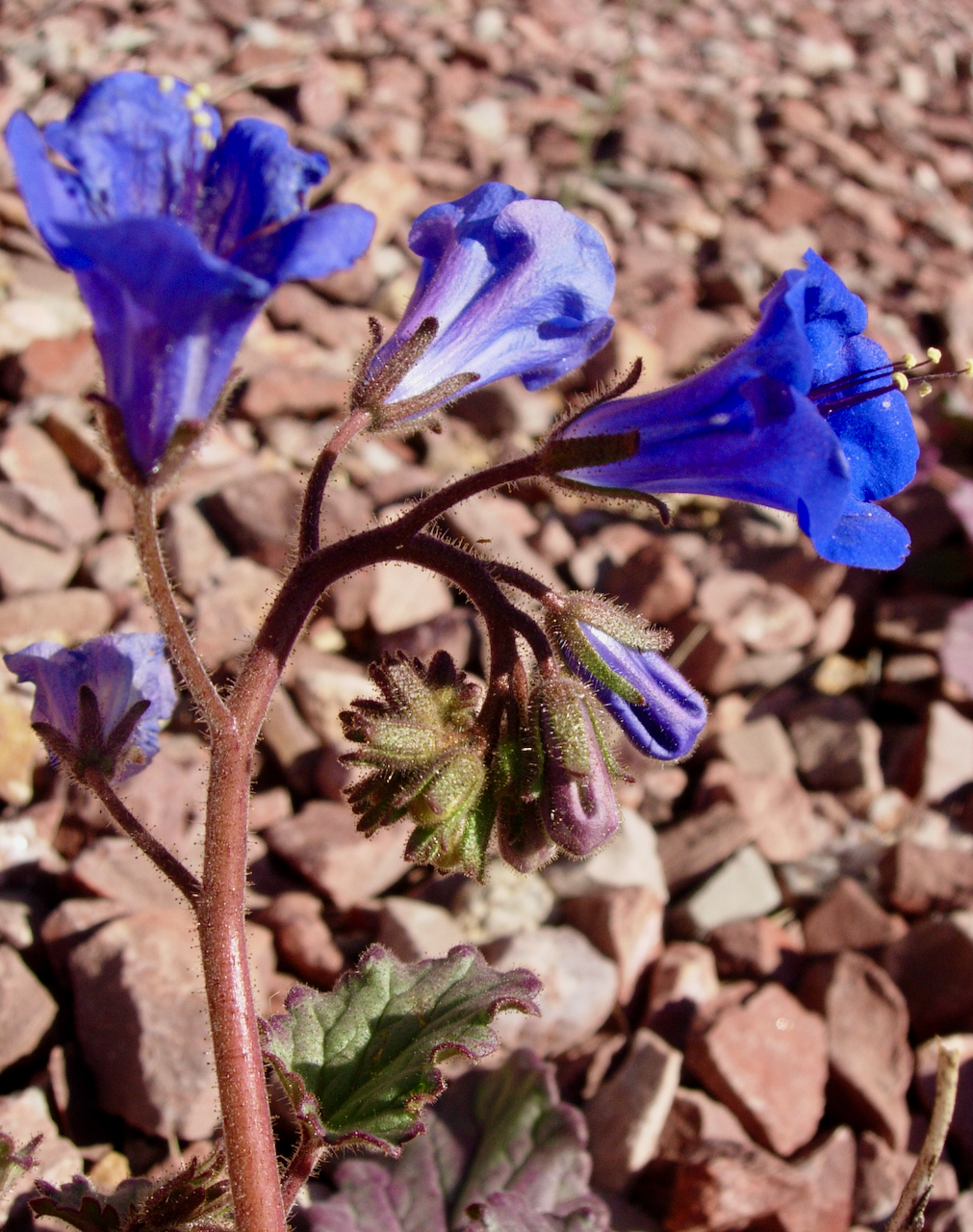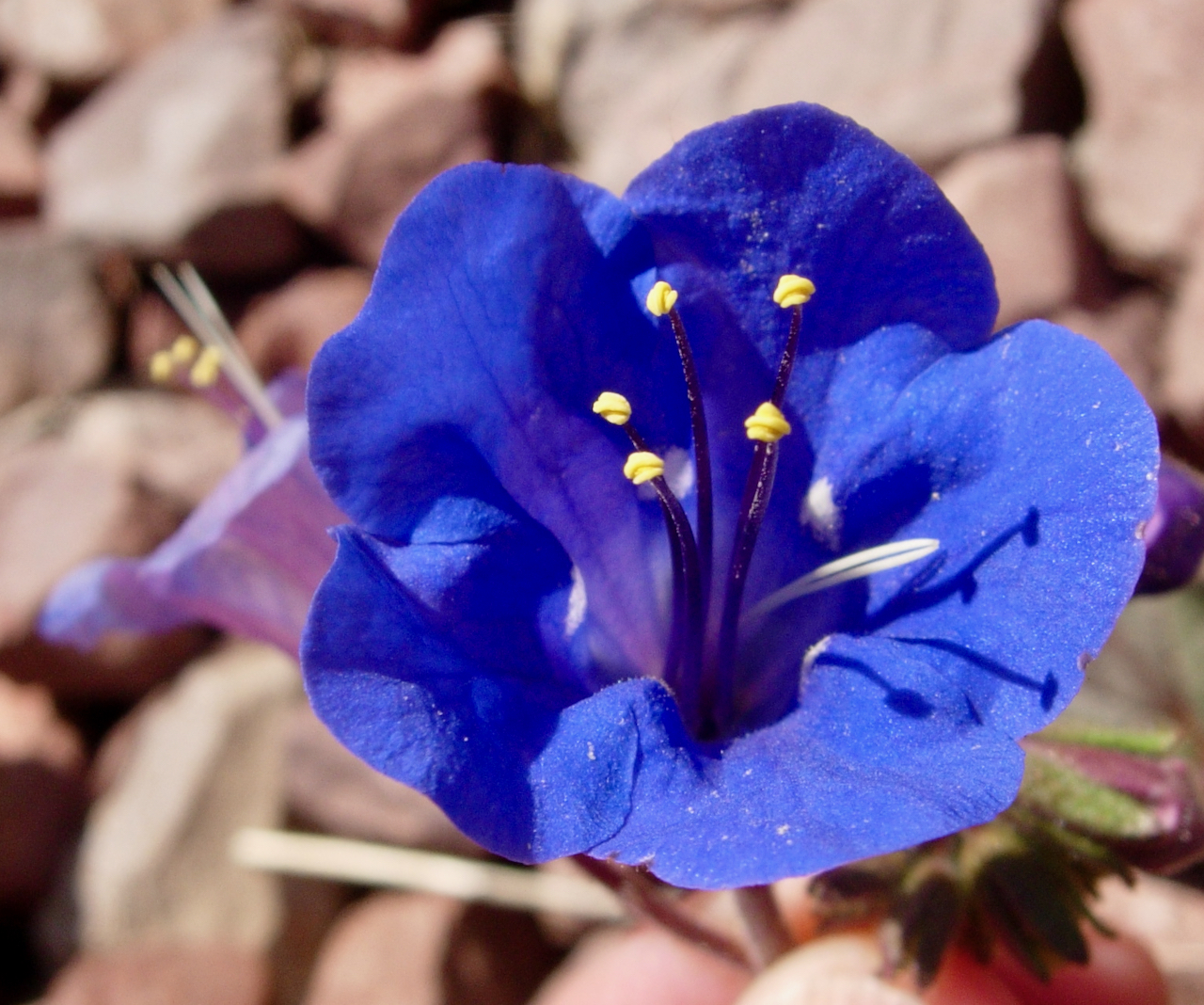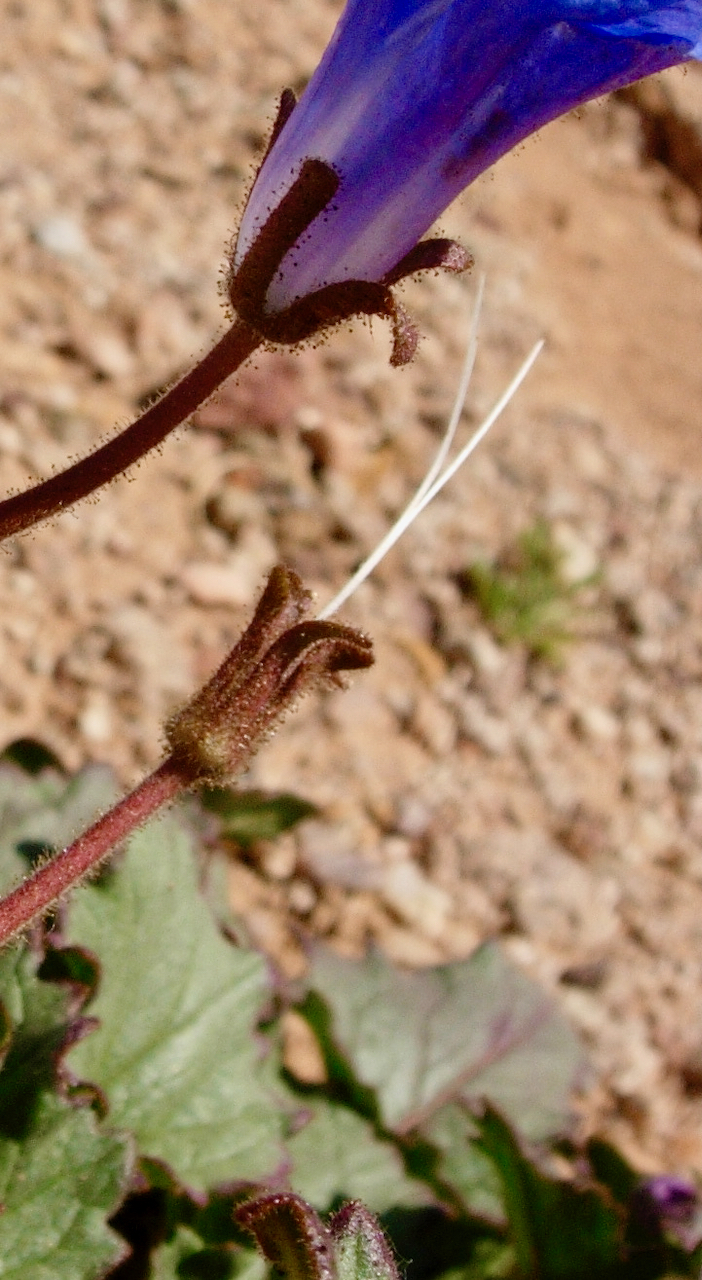Desert Bluebells, desertbells
Phacelia campanularia
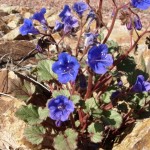
About the Plant
Desert bluebells is a spring annual generally believed to be native to California. It is included in many "wildflower mix" formulations sold in Arizona and may have naturalized in a few areas. Desert bluebells begin growing with the winter rains, flowering typically in March. Its deep blue flowers are showy and blend well with other common spring wildflowers such as Coulter's lupine and California poppy.
Sow commercially purchased seeds in fall. Water only if winter rains fail. After flowering is finished, allow plant to die and fruit to mature before removing and spreading seed.
Allergy Alert: this plant causes contact dermatitis, similar to the rash caused by poison ivy, in sensitive individuals. Wear gloves and perhaps long sleeves when handling this plant.
Wildlife value: insects may be attracted to flowers
More Information
Weekly Plant on desert bluebells
Horticultural information from ASU
